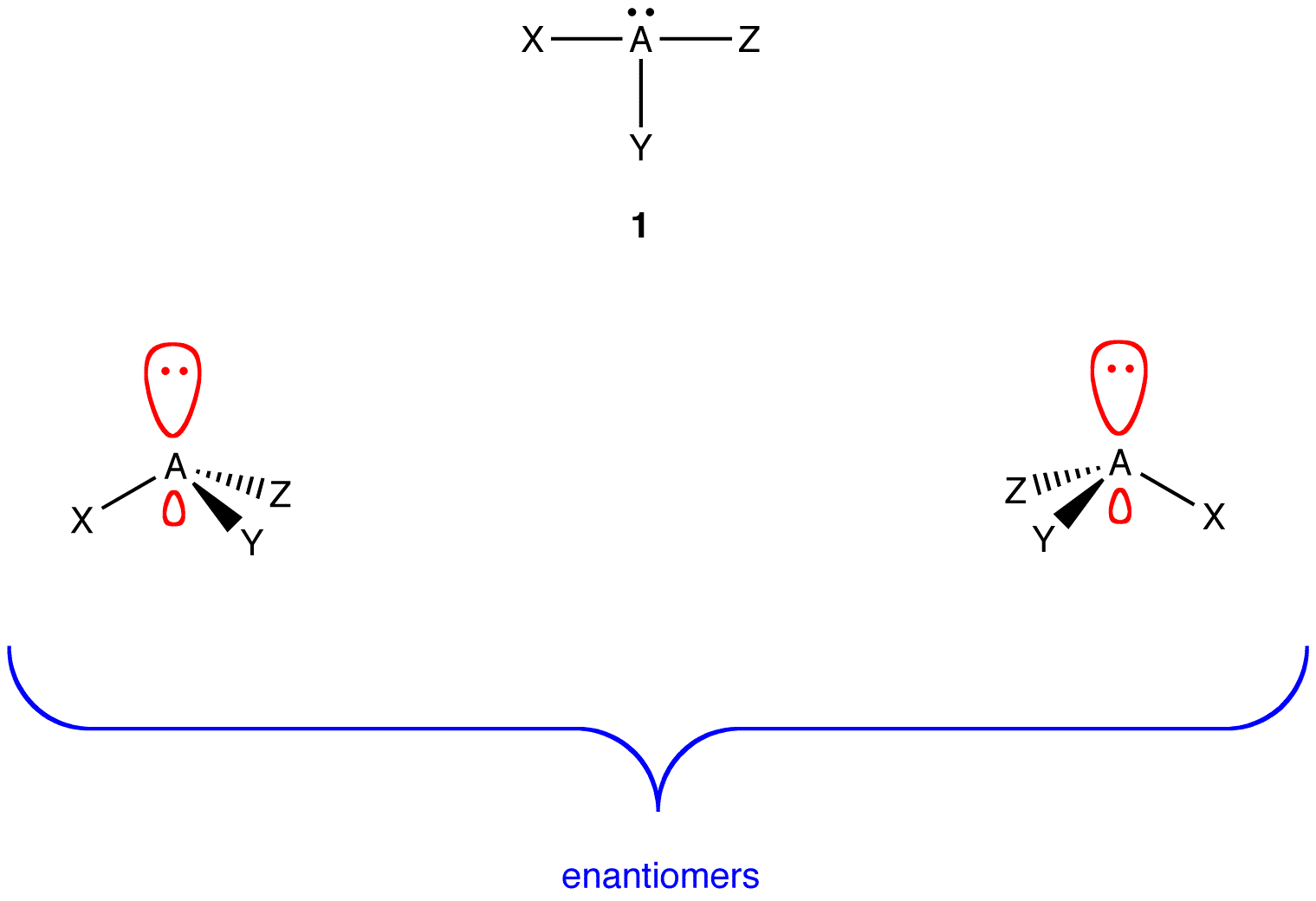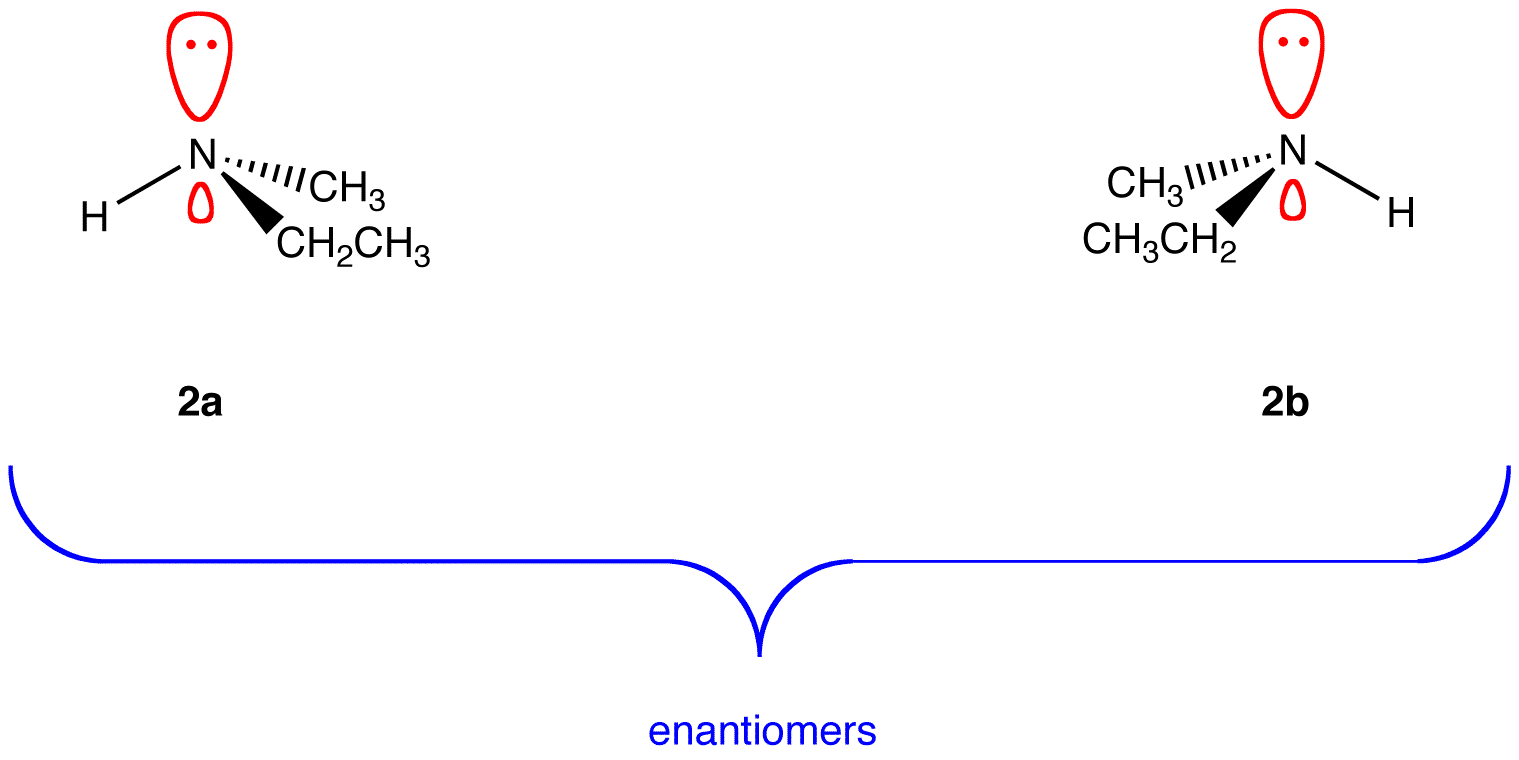Pyramidal Inversion
( \newcommand{\kernel}{\mathrm{null}\,}\)
A compound that has the general structural formula 1 is expected to exist as a pair of enantiomers.

For example, ethylmethylamine (2a) is expected to exist as a pair of enantiomers.

2a and 2b, however, have no independent existence because they rapidly interconvert. The process by which 2a and 2b interconvert is called pyramidal inversion.




